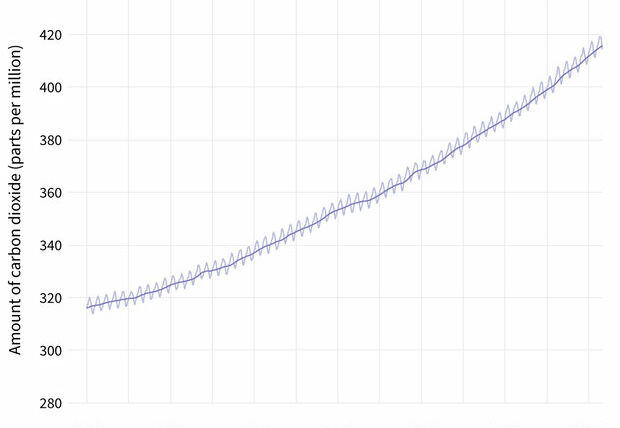As usual, it’s been a busy week for environmental news. This week I am going to stay focused on what’s going on in the automotive realm and on the transition to an EV future. Before I do, though, I want to start with some good news. Having been rightfully accused of being the bearer of doom and gloom in many regards, I thought I would recognize that there are some positive developments occurring in the natural world due to human action.
Take these two items for example.
Giant Pandas No Longer Endangered, China Says
July 9, 2021 E&E News by Ana Faguy
China’s preservation efforts are working.
“The panda population in the wild has risen to about 1,800, which reflects their improved living conditions and China’s efforts in keeping their habitats integrated,” Cui said.
The Chinese government has reclassified the species as “vulnerable.” The International Union for Conservation of Nature changed the giant panda’s status from “endangered” to “vulnerable” on its Red List of Threatened Species back in 2016.
Colby Loucks, vice president for wildlife conservation at the World Wildlife Fund, called the reclassification a sign of hope for the species.
“Thanks to decades of collaboration between the Chinese government, local communities, companies and NGOs, the giant panda’s future is more secure,”
The article goes on to say “Giant pandas first arrived at the National Zoo in 1972. The Washington, D.C., zoo”. I was in college in DC when that happened as a result of President Nixon’s historic trip to China and I was able to go to the zoo, along with one or two others who are also getting this newsletter, and see these pandas (Ling-Ling and Hsing-Hsing) after arriving in the US.

And there’s this,
Calif. Identifies New, Rare Gray Wolf Pack
Thursday, July 8, 2021 E&E News by Associated Press
A new pack of gray wolves has been identified in Northern California, becoming the third pack to establish itself in the state in the last century, state wildlife officials and conservationists said.
Three wolves in the Beckworth pack were first spotted in May on a trail camera in Plumas County near the California-Nevada state line…
For conservationists, the discovery marks a milestone in the state’s efforts to revive its population of wild wolves, SFGatereported. Gray wolves are native to California but disappeared in the 1920s. Most were likely killed through hunting or to control predation on other animals.
“This is such wonderful news,”
The species is protected under the California Endangered Species Act. Killing a wolf is a potential crime subject to serious penalties, including prison time.
Staying on positive developments, let’s talk cars. First this little fun thing…
The purr of the Ferrari engine may become a thing of the past. The Italian supercar maker is embracing the electric revolution, unveiling its second plug-in hybrid, the 819-horsepower 296 GTB. Don’t worry too much—the high-voltage battery is paired with a six-cylinder engine and it will still get you to 60 mph in under 3 seconds. With prices starting from $321,500, it’s certainly no Prius.

Ferrari
Now, let’s look at a bigger picture. Lithium is a key ingredient in the current battery technology. While I don’t believe that in the long run lithium ion batteries will be used to store the electricity to power our vehicles, for now it is essential. And it’s somewhat scarce in the volumes that we’re going to need very soon. Furthermore, much of it comes from places upon which we do not want to rely like China. Therefore, the following is something that you most likely didn’t see and is VERY good news.
EV Deal Shows ‘Lithium Valley’ Could Be For Real
David Ferris, E&E Reporter
July 7, 2021
“General Motors Co.’s future electric cars will rely on batteries made from a broiling-hot, brownish fluid that gushes from the California desert.
…CTR. The company says it is ready to make mind-boggling quantities of both lithium and electricity…
Lithium at the Salton Sea is a byproduct of making electricity. A well taps hot water underground, creating geothermal energy, and the geothermal “brine” is especially rich in lithium…
estimating that the area could supply 40% of the world’s lithium demand…
“By securing and localizing the lithium supply chain in the U.S., we’re helping ensure our ability to make powerful, affordable, high mileage EVs while also helping to mitigate environmental impact and bring more low-cost lithium to the market as a whole,” said Doug Parks, a GM vice president, in a statement…
At full build-out, CTR claims it could produce 300,000 tons of lithium, “which is more than the current production of Australia (wow),” Childress wrote in an email…
Along with the first 20,000 tons of lithium would come 50 megawatts of electricity, rising to 1,100 MW over time.”
Long time readers know that from the beginning, over two decades ago, I have been telling you that all the developments that we’re seeing now would happen much sooner than was being predicted by the supposed experts. And all this is coming to pass just as I have been saying. Article after article is now saying this or that is going to happen sooner than expected. This will continue to happen because the estimates are still to conservative. Even the following headline is going to look ridiculous in just a couple of short years.
Electric Vehicles Seen Reaching Sales Supremacy by 2033, Faster Than Expected
https://www.bloomberg.com/news/articles/2021-06-22/shift-to-electric-cars-coming-faster-than-expected-study-shows?sref=pD2ECzY4&mc_cid=40aabfb9b0&mc_eid=8f4760cc57
By Great Haensel and Keith Naughton Bloomberg News
June 22, 2021
Consultant Ernst & Young LLP now sees EV sales outpacing fossil fuel-burners in 12 years in Europe, China and the U.S. — the world’s largest auto markets. And by 2045, non-EV sales are seen plummeting to less than 1% of the global car market
the combination of government purchase incentives for EVs and proposed bans on internal combustion engines in cities and states are accelerating the adoption of battery-powered vehicles.
Do you think this is the LAST time you’re going to see this headline??? “Faster Than Expected” is getting to be the common refrain. Just watch.
We’ve all witnessed how new technologies have disrupted different industries and changed them almost overnight. Think personal computers, cell phones and cameras. It’s about to be vehicles. Consider this from Bloomberg News on June 1, 2021.
there are plenty of good reasons for optimism on the EV front. Sales of combustion vehicles peaked in 2017 and have been falling since. With EVs now running at 10% of sales in in China, 15-20% in Europe’s main auto markets, and about to get a very big boost from the Biden administration in the U.S., it’s hard to see a route back to growth for the internal combustion engine. Investment tends to chase growth, rather than absolute market share. With sales of combustion vehicles now in permanent decline, automaker strategies will start to shift rapidly. The first 1% was definitely the hardest.
I just read that the auto manufacturers have committed $150 Billion to EV development. That doesn’t leave much for the rest of the product line. The ICE products are going to get “long in the tooth” real quickly and then who’s going to buy one?
Check this out from E&E News June 21, 2021.
Traditional carmakers are stepping up expertise in battery technology to challenge Tesla Inc. and attract customers with improved driving ranges, performance and charging times. Batteries for sportscars need to cope with high temperatures and be capable of fast charging and effective energy recuperation.
The new cells will allow charging in less than 15 minutes, Porsche Chief Executive Officer Oliver Blume said in an interview with Welt am Sonntag. The brand’s Taycan model currently needs 22.5 minutes to charge the battery to 80% from 5%, he said.
Porsche will use silicon as anode material for higher energy density and a more compact battery.
You get the picture. And think about yourself. When most everyone you know and respect are buying EVs, are you going to buy another ICE? If you think you’ll buy another one email me back and just say “yes”. I doubt there will be many of you. Not if you care about its resale value.
Here are a few headlines in case you missed the fact that once again the West Coast is frying and the consequences are grim. This is NOT NORMAL!
Death Valley Hits 130 Degrees as Heat Wave Sweeps the West
Click here to read full article from the New York Times on July 10th
North America Has Its Hottest June on Record
Click here to read the full article in the New York Times from July 7, 2021
Drought Spreads to 93% of West. That’s Never Happened
Thomas Frank (no relation) Wednesday, July 7, 2021
More than 93% of the land in seven Western states is in drought conditions, and nearly 59% of the area is experiencing extreme or exceptional drought — the two worst conditions —
Agriculture Department reports show that several crops, including wheat, sunflowers and barley, are threatened by the extensive drought, which is concentrated in the West but is also affecting areas as far east as the Dakotas, Minnesota and Iowa.
“We have huge concerns up in the northern Plains.”



